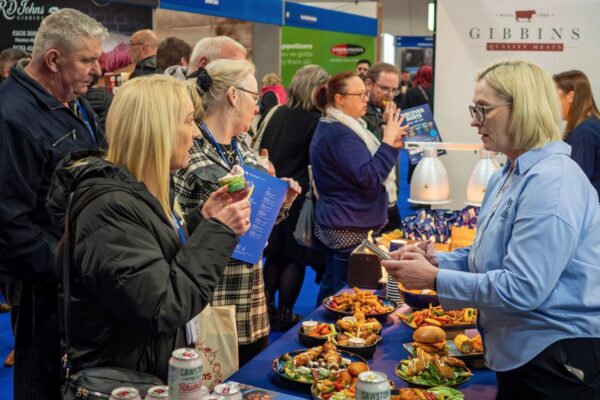
Alan Monahan writes: It is some years since Sir John Timpson was a guest speaker at The GA’s annual members’ day.
He talked a lot of sense then and struck me as a caring man – evidenced by him giving prisoners a chance to re-enter society working in his shoe repair and key-cutting business.
So when Sir John was asked to chair a panel which would diagnose the issues facing our high streets and town centres – and advise on the best practical measures that central government could take to help – I thought that they had found the right man. After all, he has more than 50 years of retail experience and a chain of shops to rival Costa Coffee … well almost.
But I can guess what you’re thinking: ‘We’ve been here before: Mary Portas. Oh no, I can feel another report coming on!’
Well, you wouldn’t be wrong. The panel’s findings were published just before Christmas in said report, commissioned by High Streets Minister Jake Berry (no, I hadn’t heard of him either), who commented that his department would now ‘carefully consider’ the ‘proposed tangible ways to keep these treasured spaces alive and thriving for generations’. Okay, I’ll take your word for it. But being a cynical old so-and-so I do hope that this isn’t just another political can that will be kicked down the road and forgotten as quickly as Mr Berry when he moves to another job.
Anyway, Sir John says in The High Street Report that against the changing environment for traditional retail it is pleasing that some places have bucked the trend. By replanning their town centre space, inspirational local leaders, working in collaboration with all sections of their community have put a buzz back into their town centres, reducing the number of empty shops and increasing footfall. ‘Quite simply, making the town centre a place people want to be.’
Yes, yes – go on, Sir John. And he does.
‘The lesson that government should learn from these shining examples is that by helping local teams with a viable vision to put their own plan into action, real change can happen. Reimagining our town centres should not be seen as a central programme dictated by government. ‘It is a series of locally inspired and led initiatives that are supported by a government that offers information and helps to clear obstacles out of the way … providing help on a town by town basis, enabling local leaders to design future town centres that recreate a community hub.’
And that line, ‘a government that offers information and helps to clear obstacles out of the way’, really is the most important element that could make this happen. But there are so many imponderables in politics – particularly at the moment – that could result in this being kicked into the long grass.
Sir John believes that local teams, which may comprise local government, businesses and community groups in each town, must discover a culture and central purpose that unites their community and attracts them to the town’s central hub. ‘We have found that each successful town has its own brand and understands its unique selling point.’
I’ve been banging on for a long time about the negative effect that dominating digital technology is having on our lives – whether it’s the way we shop as consumers or as retailers – and I’m pleased that he shares the view that there is an increasing need to encourage social interaction.
‘Face-to-face communication has an important part to play in wellbeing, by establishing the strong attachment with others that are a critical part of making us human,’ says Sir John, whose interim recommendations were accepted by the Chancellor of the Exchequer, with the Budget of 2018 creating a £675m fund for an action plan for our high streets and town centres.
This includes money to help places to adapt and evolve for the future, as well as funding to set up a task force to support local leaders in their efforts to support their local communities.
Sir John’s message to them is, ‘You can do it – we are here to help.’ And while some may fail, he believes that many more will create the town centres we need in 20 years’ time.
And he told BBC Breakfast that reviving high streets and town centres wasn’t just about shopping, but also creating a hub for entertainment, medical facilities and housing, adding, ‘We probably have about twice as many shops as we need. But we are short of housing.’
Something he has called for immediately is the introduction of a National High Street Perfect Day where local communities would ensure their town centre looked as good as possible on one day a year.
Sounds fine, and although a day a year doesn’t seem very ambitious, it’s a start I suppose: one only has to look as the success of Small Business Saturday to see the difference such initiatives can make.
It’s possible, but unlikely, that Sir John or I – we are the same age – will be around in 20 years’ time to ‘see the town centres we need’. In the meantime we must hope that government promises to help retail aren’t just weasel words and that there is still room for shops in our town centres over the next two decades.
A PwC report has revealed that a net 1,123 stores disappeared from UK high streets in the first six months of 2018, and towards the end of the year some 14 were closing every day.
I doubt that Sir John and his team could do anything in the short term to stop this haemorrhaging – or would necessarily want to if we have ‘twice as many shops as we need’ – but I nevertheless look forward to reading any retail success stories that may emerge as a result of his panel’s recommendations.
And I fervently hope that five years down the line we are not discussing his report with the same weary sense of déjà vu that has dogged previous ones.











